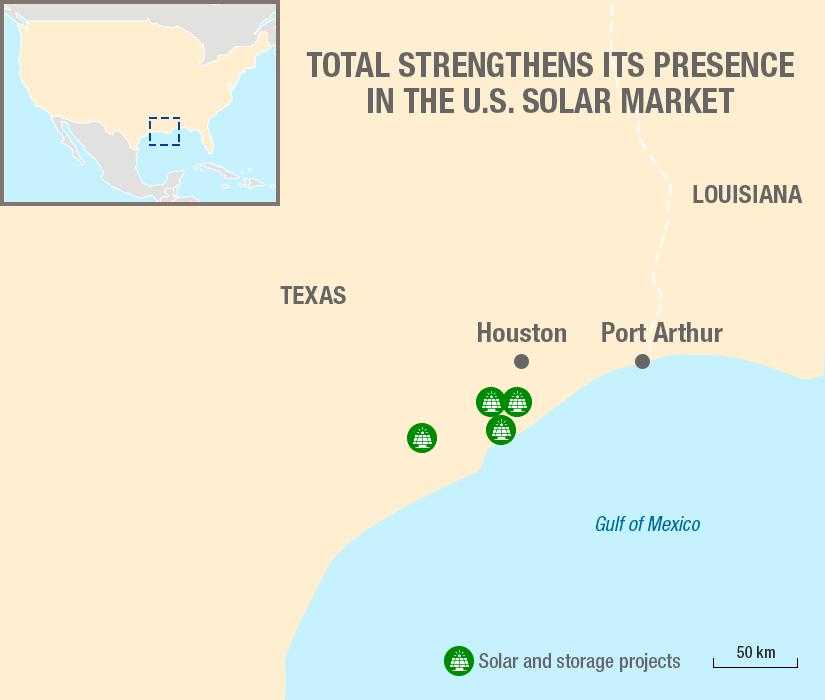Total SA agreed on Feb. 5 to acquire Texas solar projects located outside Houston as part of a major push by the French oil major to become one of the world leaders in renewable energies.
In a company release, Total said it will buy the development pipeline of solar projects and battery storage assets from SunChase Power and private investment firm MAP RE/ES. The terms of the transaction weren’t disclosed.
Under pressure from investors to curb emissions and boost renewable energy output, Total plans to add some 10 gigawatts (GW) in renewable energy production capacity a year and to reach 35 GW by 2025.
In January, Total said it would pay $2.5 billion for a share in India’s Adani Green Energy Ltd. (AGEL) and its solar power assets, its biggest investment yet in renewables. On Twitter, Total CEO Patrick Pouyanné said the deal with Adani further demonstration of the company’s transformation strategy.
“By 2020, Total will be in the top 5 for renewable energy,” Pouyanné wrote.
The acquisition announced Feb. 5 will add 2.2 GW to Total solar portfolio in the U.S., consisting of four large-scale solar projects, each with co-located battery energy storage systems, in industrial areas close to Houston that have high demand for electricity. Construction of the first two projects will start later this year with all projects expected online between 2023 and 2024.

With the latest acquisition, Total is now developing close to 4 GW of renewable power capacity in the U.S.
“We look forward to taking advantage of the many growth opportunities in the U.S. market to address the challenges of the energy transition,” Pouyanné said in a statement on Feb. 5.
Further, Total said it planned to cover all power consumption of its operated industrial sites in the U.S., including refining and petrochemical platforms along the Gulf Coast, from its solar power and energy storage assets, which Pouyanné described in the company release as “concrete proof” of Total’s ambition to achieve carbon neutrality by 2050.
Reuters contributed to this article.
Recommended Reading
FERC Approves Extension of Tellurian LNG Project
2024-02-19 - Completion deadline of Tellurian’s Driftwood project was moved to 2029 and phase 1 could come online in 2027.
US NatGas Flows to Freeport LNG Export Plant Drop Near Zero
2024-04-11 - The startup and shutdown of Freeport has in the past had a major impact on U.S. and European gas prices.
Freeport LNG Says Trains 1, 2 at Texas Facility May Shut Until May
2024-03-20 - Freeport LNG on March 20 said its Train 2 liquefaction unit at the Texas plant has been shut down, while Train 1 will be taken down imminently as it expects inspections and any subsequent repairs at both the units to be completed by May.
Freeport LNG's Feedgas Usage Falls Again
2024-03-11 - Natural gas flowing to Freeport LNG's Texas facility was down to 758 MMcf on March 11 from 1463 MMcf on March 3, LSEG data showed.
Asia Spot LNG at 3-month Peak on Steady Demand, Supply Disruption
2024-04-12 - Heating demand in Europe and production disruption at the Freeport LNG terminal in the U.S. pushed up prices, said Samuel Good, head of LNG pricing at commodity pricing agency Argus.

